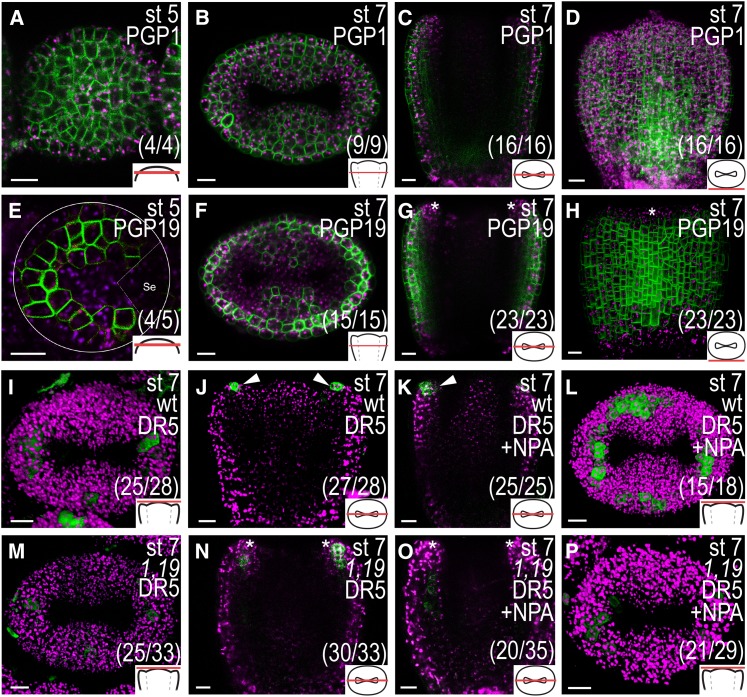Figure 8.
PGP1 and/or PGP19 are important for the formation of apical auxin response maxima. A to D, PGP1pro:PGP1-GFP expression in optical transverse sections of a stage (st) 5 remaining floral meristem (A) and stage 7 gynoecium (B) and an optical longitudinal section (C) and a three-dimensional reconstruction of a series of z-stack images (D) of a stage 7 gynoecium. E to H, PGP19pro:PGP19-GFP expression in optical transverse sections of a stage 5 remaining floral meristem (white circles; E) and a stage 7 gynoecium (F) and an optical longitudinal section (G) and three-dimensional reconstruction of a series of z-stack images (H) of a stage 7 gynoecium. A sepal partly covering the primordium in E is indicated by dashed lines and Se. I to L, DR5rev:GFP expression in wild-type (wt) stage 7 gynoecia viewed from above (I and L) and in longitudinal optical sections (J and K) 24 h after mock (I and J) or NPA treatment (K and L). M to P, DR5rev:GFP expression in pgp1 pgp19 (1,19) double mutant stage 7 gynoecia viewed from above (M and P) and in longitudinal optical sections (N and O) 24 h after mock (M and N) or NPA treatment (O and P). Asterisks indicate lack of expression in the apical-most cell layer, arrowheads indicate expression in the apical-most cell layer, magenta indicates chlorophyll autofluorescence, schematic drawings in bottom right corner indicate the tissue type viewed, and parentheses indicate fraction of gynoecia showing the displayed features. Bars = 10 µm.

